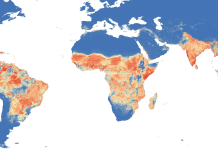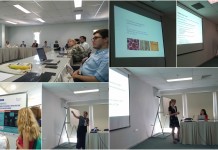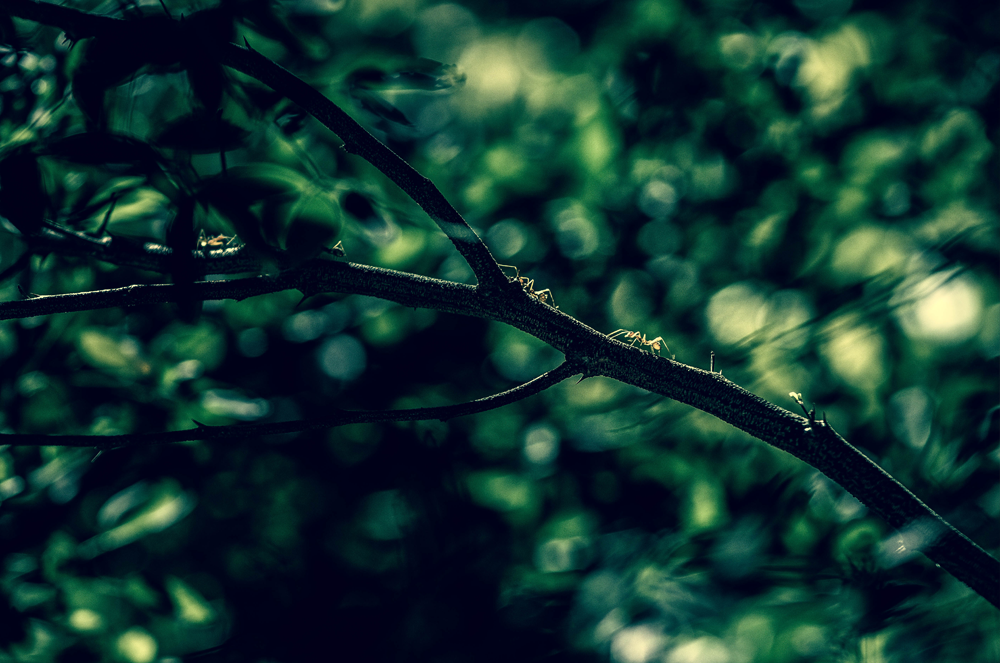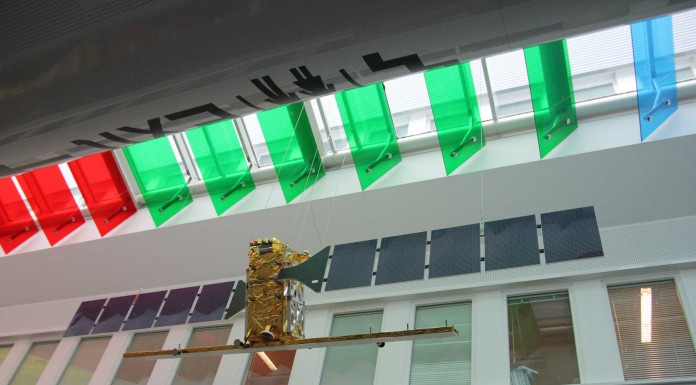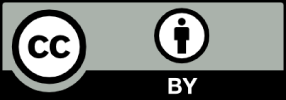We live in a visual world – but when TDM is discussed, images are rarely mentioned. This is astonishing for taxonomy, the science of charting the world’s biological diversity, because it has a rich tradition of illustrating scientific articles with images and diagrams of species. Similar to the scientific language and the structure of articles developed and used to describe the taxa and allow unambiguous comparisons, illustrations use standardized views of characteristics that have been discovered to aid other taxonomists compare, separate, and diagnose species.
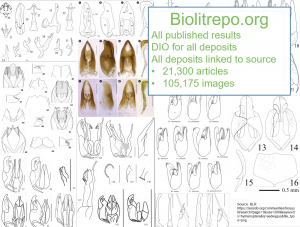
Taxonomy has an artificial start date for publications in 1753 for plants, when Carl Linnaeus published Species Plantarum, and 1758 for animals marking the publication of his Systema Naturae. These volumes are characterized by the use of Latin binomina for names, and the use of taxonomic treatments for the species, including sections such as diagnostic characters, brief descriptions and distribution. Illustrations became familiar components of descriptions slightly later. From the start, most adopted stylized views of diagnostic parts of organisms or of whole organisms. Views that often are still used today.
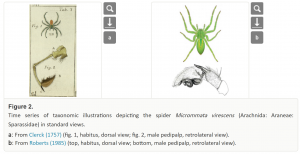
Furthermore, the naming of species is ruled by Codes of Nomenclature that require articles to comply with an array of rigorous rules that ensure that new species, when named, can be set apart from other species. This comparative element requires that descriptions can be compared. Descriptions contain similar arrays of elements and are presented in standardised formats.
Our publication, “Copyright and the Use of Images as Biodiversity Data” builds its argument upon this highly successful standardized modus operandi. The article starts with an overview of published taxonomic illustrations, and follows up with a legal analysis.
Our conclusion is that most images in taxonomic literature do not qualify as copyrightable work in a legal sense. They are not novel forms of expression as would be required to be considered a copyrightable work. Rather, images are crafted to comply with conventions in the taxonomic domain. Thus, these images belong, like data, in the public domain.
A counter argument is that each image is creative, stressing the differences of content above the commonalities of style. This argument fails to grasp the legal sense of creativity and is the artistic or public view. In addition to conventions for images, there is an increasing use of automated digitization and image analysis for machine-based identification. The more standardized the images, the greater is our ability to identify species. Indeed we might paraphrase this as: “The best taxonomist is the one whose research result are the least copyrightable”.
This argument improves access and re-use of images, facilitated by initiatives such as the Biodiversity Literature Repository in which over 105,000 images are open access. All are, properly attributed to the source document, to the realated, extracted taxonomic treatments on TreatmentBank, and other external resources. This also allows the user to give credit to individual parts of articles that are all too often behind paywalls. Improved access to content makes it easier for us to question conclusions and insights, just as we question hypotheses.
The legal arguments made in the article are opinions that can be challenged. Where there are other opinions, their resolution, unlike in the Sciences, can ultimately be decided in the courts. Until such time as opposing opinions are tested in court, we continue to make images available on the understanding that such acts are compliant with copyright legislation. We trust that our open repository of liberated images will be seen as an invaluable resource that eases the work of taxonomists, accelerating and improving the quality of new discoveries. We further hope that this insight will stimulate scientists to make their images open access, in line with the increasingly popular open access movement.
This post is originally published on Research Ideas and Outcomes (RIO) journal, by Willi Egloff, Donat Agosti, Puneet Kishor, David Patterson, Jeremy A. Miller. For longer version, please visit the original journal site here.
The article starts with an overview of published taxonomic illustrations, follows up with a legal analysis and an updated Blue List of elements of taxonomic information that are not subject to copyright.
Info on image at the top:
Licence: CC0
By: Donat Agosti
Source: composite from Biodiversity Literature Repository
bottom:
License: CC0
By: Egloff et al., 2017
Source: doi: 10.3897/rio.3.e12502
// All blog posts are the personal opinion of the bloggers. For more information see FutureTDM's DISCLAIMER on how we handle the blog. //




